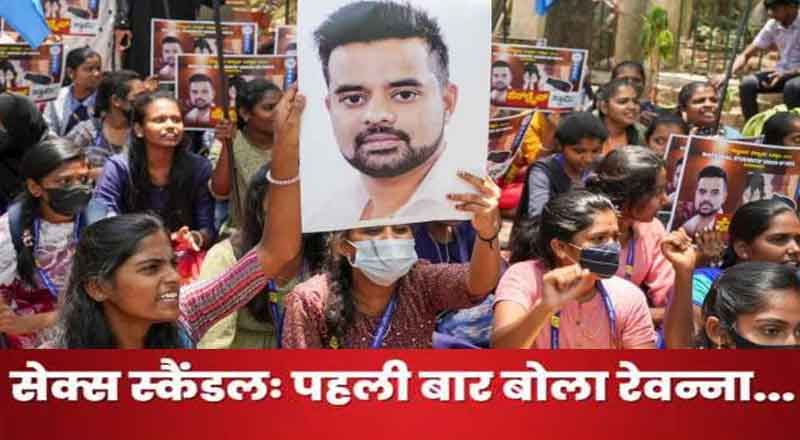As Eknath Shinde runs away with most of the Shiv Sena‘s MLAs to prop up a BJP government, here is why the Thackerays are caught in a bind in rebuilding the Sena.
The Uddhav Thackeray government in Maharashtra has fallen. Not because of his allies — the NCP and the Congress. But because one of his own, Eknath Shinde, broke away with most of the 55 Shiv Sena MLAs to prop up a BJP government led by Devendra Fadnavis.
First, a quick recap of what has happened in Maharashtra in the last two-and-a-half years.
- The BJP-Shiv Sena combine won the 2019 Assembly polls, the Congress-NCP alliance lost.
- The saffron bloc broke up over power-sharing and Fadnavis formed government with an NCP faction but quickly quit as Sharad Pawar rebels returned home.
- A Sena-NCP-Congress alliance formed government which has fallen now.
CAN AADITYA DO IT?
Now, Uddhav Thackeray has vowed to rebuild the Shiv Sena from the ground up. Much of this rebuilding will apparently be left to his son, Aaditya, given his father’s age, health and apparent disenchantment with political heavy-lifting. Uddhav underwent spine surgery last November and operated from home for several weeks.
Also, the 61-year-old Uddhav, who inherited his party from his father, is not a mass leader in the classical sense. He was a member of the Legislative Council (he has also quit this post), while Aaditya, 32, is an MLA from Mumbai’s Worli and heads the Shiv Sena’s youth wing and has been at the forefront of protests against the rebel MLAs.
In fact, Aaditya is only the second from the Thackeray family to have run for public office. His aunt Shalini had fought an election on the MNS ticket. Even Bal Thackeray did not contest an election but was an astute operator of ground-level politics.
First, an urbane Aaditya with a passion for global issues and popularity in Bollywood circles will have to lead the party in the Brihanmumbai Municipal Corporation (BMC) elections due this year
HOW SENA WAS BUILT
But the Shiv Sena was not built in a day. From being a cartoonist with the Free Press Journal to launching his political weekly, Marmik, to campaigning against the growing influence of non-Marathis in Mumbai, Uddhav’s father, Bal Thackeray, launched his Shiv Sena in 1966 to advocate for the interests of Maharashtra in national politics.
In 1998, the Shiv Sena joined the BJP-led National Democratic Alliance (NDA) and remained part of the Vajpayee government (1998-2004) and the Modi government (2014-2019) at the Centre and the BJP-led Maharashtra government (2014-2019) in the state. The saffron bloc broke up seven years after Bal Thackeray’s 2012 death.
THE MNS EXPERIMENT
Rebuilding a Sena was attempted before but did not quite work.
Uddhav’s cousin, Raj Thackeray, started his political career by launching the Shiv Sena’s student wing and soon believed himself to be the heir of his uncle, who was seen preferring his son. A frustrated Raj Thackeray quit the Shiv Sena in 2005 and launched his Maharashtra Navnirman Sena or MNS the following year.
Raj Thackeray hit the headlines in 2008 by running a violent movement against migrants from North India in Maharashtra and more so in its capital, Mumbai. But his political fortunes soon declined. In the 2019 state Assembly election, the MNS lost 109 of the 110 seats it contested.
So, the question is: Can Aaditya Thackeray do what his grandfather did and uncle couldn’t? As things stand now, the Thackerays seem caught between a rock and a hard place. Here is how:
THE HINDUTVA BIND
Both the Thackerays and Shinde’s faction claim to be fighting for Balasaheb’s ideals. But when the Shiv Sena, the NCP and the Congress together formed the government in 2019, they committed themselves to “secular values.” This was part of why Shinde rebelled and became a saffron and natural ally of the BJP. And this is where Aaditya’s most significant challenge lies.
You fight a grouping’s ideology with your own ideology. Shinde and the BJP will have more traction from voters favouring Hindu nationalism, something Balasaheb proudly stood for.
After the 1992-93 Mumbai riots, Balasaheb and his Shiv Sena took on a more aggressive Hindutva stance. In 1999, he was, in fact, banned from voting and contesting in any election for six years on the recommendations of the Election Commission for seeking votes in the name of religion. He often said he was “proud of Shiv Sainiks who razed the Babri mosque” in Ayodhya in 1992.
If Uddhav is being hailed today by a section for being a good administrator who tackled Covid effectively and fought off communalism, part of the reason is he didn’t have too many choices. He had to look different from the BJP. With no Hindutva card to play with, he had to do what he did.
Having said that, the rebuilding question does not arise if Shinde restores allegiance to the Thackerays on their going back to the BJP.




